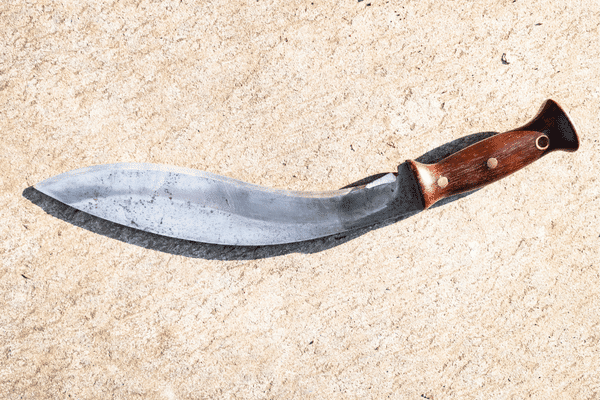In the vast world of edged weapons, the debate over the strength of katanas versus traditional swords has sparked curiosity and discussion. In this exploration, we aim to unravel the nuances of these iconic blades, examining the craftsmanship, materials, and historical context to determine whether katana is, indeed, stronger than traditional swords.
I. The Anatomy of Strength
1. Katana Construction:
Katanas are renowned for their unique construction, utilizing a differential hardening technique known as "yakiba." The blade is crafted from a combination of high-carbon and low-carbon steel, resulting in a hardened edge and a more flexible spine. This combination enhances the overall strength and resilience of the katana.2. Traditional Sword Construction:
Traditional swords, encompassing a broad range of styles like broadswords, longswords, and sabers, vary in their construction. Typically forged from high-carbon steel, their strength relies on factors such as thickness, tempering, and the skill of the blacksmith. The forging techniques can significantly impact the sword's strength and durability.II. Metallurgical Mastery
1. Katana's High-Carbon Edge:
The katana's high-carbon steel edge, often subjected to a rigorous forging and heat-treating process, contributes to its renowned sharpness and strength. This metallurgical mastery ensures that the katana's blade can retain its sharp edge while withstanding the impact of strikes.2. Traditional Swords' Metallurgy:
Traditional swords also employ high-carbon steel, but the specific composition varies based on regional and historical preferences. The tempering process influences the sword's hardness and flexibility, affecting its overall strength. Different traditions may prioritize attributes like cutting power or resistance to bending.III. Strength in Design
1. Katana's Curved Blade:
The katana's distinctive curved blade enhances its cutting efficiency and strength. The curvature allows for a focused point of impact, concentrating the force of the strike and minimizing resistance. This design is particularly effective in single, precise slashes.2. Traditional Swords' Varied Designs:
Traditional swords encompass a wide array of designs, each optimized for specific combat scenarios. While some may feature straight blades for thrusting, others may emphasize broader, slashing capabilities. The varied designs cater to different fighting styles and preferences.IV. Historical Context and Application
1. Katana in Japanese Martial Arts:
The katana's strength is not only in its physical attributes but also in its historical and cultural context. Developed for samurai, the katana became an integral part of Bushido, the samurai code. Its design and application were tailored to the specific needs of Japanese martial arts and battlefield tactics.2. Traditional Swords Across Cultures:
Traditional swords, being diverse in design, found their strength in various historical contexts. From the European longsword to the Middle Eastern scimitar, each style reflected the unique challenges and preferences of its respective culture and warfare techniques.V. Practical Considerations
1. Katana's Versatility:
The katana's strength lies not only in its cutting ability but also in its versatility. Suitable for both slashing and thrusting, the katana offers a balanced approach that accommodates a range of combat scenarios.2. Traditional Swords' Specialized Roles:
Traditional swords, depending on their design, may excel in specific roles. Broadswords may be potent in cleaving through armor, while rapiers emphasize thrusting precision. The strength of traditional swords often aligns with their intended applications.VI. Conclusion: Strength in Diversity
In conclusion, determining whether katanas are stronger than traditional swords is a nuanced exploration. The strength of these blades is influenced by metallurgy, design, and historical context. Katanas, with their unique construction and cultural significance, offers a formidable combination of sharpness and resilience. Traditional swords, in their diverse forms, showcase strength tailored to specific cultural, historical, and tactical needs. Ultimately, the strength of a sword lies not only in its physical attributes but also in the mastery of its wielder and the historical legacy it carries.
.png)



Comments
Post a Comment